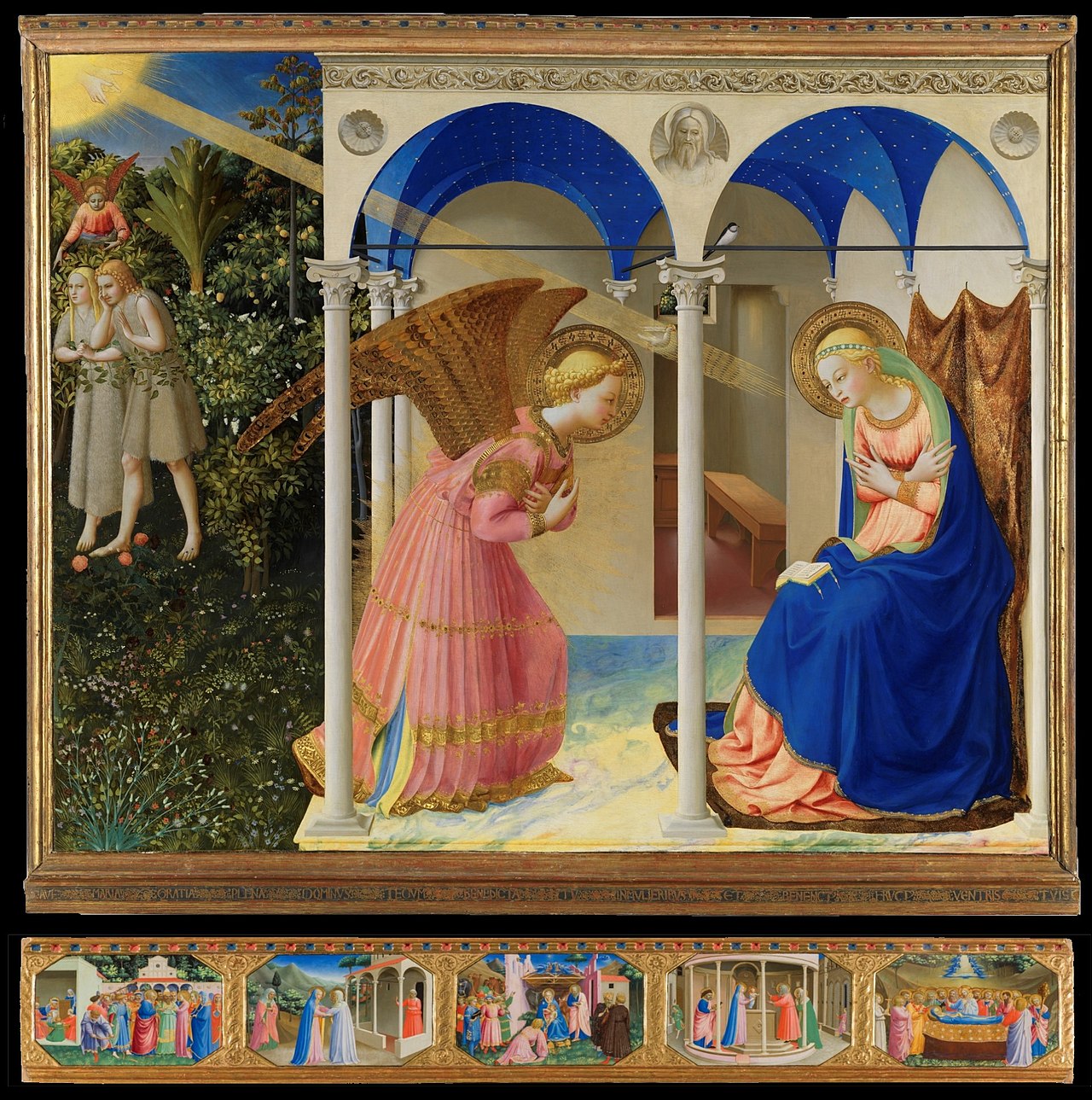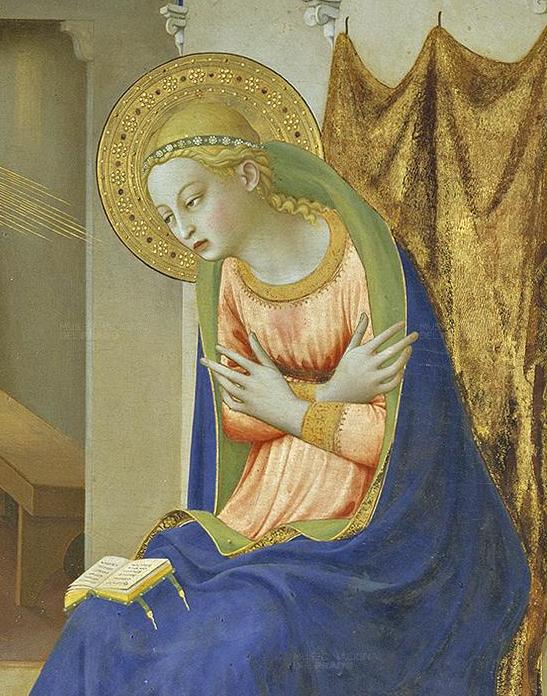
Have you ever stood in front of Beato Angelico’s Annunciation and wondered about the deeper meaning of this sacred work of art?
When we come across the theme of the Annunciation, our mind often associates this biblical narrative with Beato Angelico’s iconic work. This masterpiece is not only a masterpiece but also a symbol of Christian devotion. In this post we discover the details that make it a timeless work.
The Annunciation by Beato Angelico: a masterpiece of art and devotion

Le tre Annunciazioni di Beato Angelico
The creator of this masterpiece is Fra’ Giovanni da Fiesole, better known as Beato Angelico. Born in Florence in about 1395, Fra Angelico was beatified in 1982 by Pope John Paul II.
His most famous work is undoubtedly the Annunciation, painted for the convent of San Domenico.
Unlike other monastic artists, such as Filippo Lippi, Angelico was a monk with a true religious vocation, and saw painting as an extension of his faith.
Trained in the Florentine late Gothic environment, Fra Angelico began his artistic career as a miniaturist. This training is evident in his style, which ranges from meticulous detail to brilliant tones and the use of light that almost completely eliminates shadows.
ALL VERSIONS OF THE ANNUNCIATION BY BEATO ANGELICO
Beato Angelico’s Annunciation is not a single masterpiece, but a series composed of three different works. The most famous version, known as the Prado Annunciation, is housed in the Prado Museum in Madrid. Two other important versions are the Annunciation in Cortona and the Annunciation in the convent of San Marco, Florence.
All three works depict the moment when the archangel Gabriel reveals to Mary that she will give birth to the son of God.
THE ANNUNCIATION BY BEATO ANGELICO DEL PRADO
Beato Angelico’s Annunciation is certainly the most famous of the artist’s three known versions.
The work was executed in tempera on panel and shows a mixture of elements typical of Renaissance art and the Gothic style. For instance, the painting features classical architectural details, but also makes abundant use of gold and gilded haloes.
In the background, the scene of Adam and Eve, expelled from Paradise, suggests redemption through the birth of Christ.
The garden in which the scene takes place is a reference to the typical biblical ‘hortus conclusus’ and is rich in symbolism. From white and red roses symbolising purity and sacrifice respectively, to four-leaf clovers referring to the cross, each element has a precise meaning.
Mary is seated with her hands on her lap, while the Archangel Gabriel is kneeling and facing her. Both are under a portico adorned with Corinthian columns and round arches. Note the swallow that appears on the iron bar of the portico, which is a temporal reference to the Annunciation.
A ray of divine light descends from above, passing through a dove, symbol of the Holy Spirit, illuminating Mary as she humbly accepts her destiny.

Beato Angelico, Annunciazione (dettaglio)
Beato Angelico’s Annunciation is not only a masterpiece of Christian art, but also a work that blends artistic technique and profound symbolism. It is a true testament of faith and devotion, not only of the artist, but also of the cultural and religious tradition it represents.

